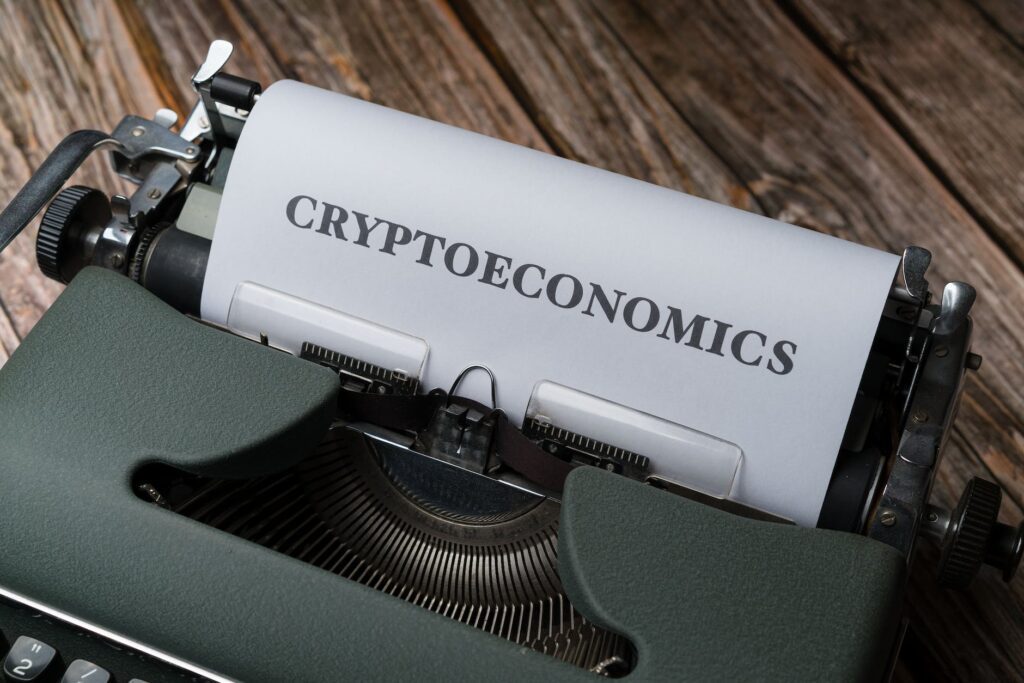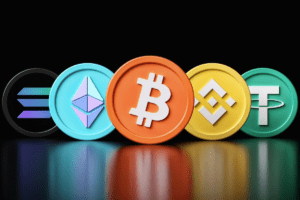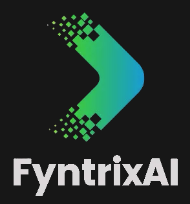Understanding Solana
An Introduction to Solana
Solana is a high-performance blockchain platform designed to provide fast and scalable solutions for decentralized applications (dApps) and cryptocurrencies. Founded in 2017 by Anatoly Yakovenko, Solana aims to address the scalability limitations that many blockchain networks face.
Solana stands out among other blockchain platforms due to its unique combination of cutting-edge technologies. It utilizes a combination of Proof of History (PoH) and Proof of Stake (PoS) consensus mechanisms to achieve high throughput and low latency. This enables Solana to handle thousands of transactions per second, making it one of the fastest blockchain networks available.
One of the key features of Solana is its focus on scalability. Traditional blockchain networks often struggle with increasing transaction volumes, leading to slower transaction speeds and higher fees. Solana’s architecture, on the other hand, is specifically designed to scale with growing demands. Its innovative approach allows for horizontal scaling, meaning that as the network expands, it can handle increased transaction loads without sacrificing performance.
The Rise of Solana in the Crypto Space
Since its launch, Solana has gained significant attention and recognition within the crypto space. Its ability to address scalability issues has made it an attractive platform for developers and users alike. Solana’s scalability is particularly beneficial for decentralized finance (DeFi) applications, where high transaction volumes are commonplace.
The Solana ecosystem has seen rapid growth, with a diverse range of projects and applications being built on the platform. The Solana mainnet provides a robust infrastructure for developers to create and deploy their dApps, offering a seamless user experience.
Solana’s native token, SOL, plays a vital role within the Solana ecosystem. It serves as a utility token, enabling users to participate in network governance, stake their tokens, and access various services within the Solana ecosystem. To learn more about SOL tokens and their role, refer to our article on solana token.
As Solana continues to gain traction, its future looks promising. The Solana team has outlined an ambitious roadmap that includes further enhancements to the platform’s scalability, security, and interoperability. This roadmap positions Solana as a strong contender in the blockchain space, with the potential for widespread adoption and impact.
To stay updated on Solana’s progress and partnerships, refer to our article on solana partnerships. As the Solana ecosystem evolves, it will likely attract more developers and users, contributing to the growth and success of the platform.
Decoding Solana Tokenomics
In order to understand the inner workings of Solana, it is essential to delve into its tokenomics. Tokenomics refers to the economic and financial principles behind a token or cryptocurrency. It encompasses various aspects such as token supply, distribution, utility, and more. Let’s explore the tokenomics of Solana in detail.
What are Tokenomics?
Tokenomics is a term used to describe the economic system that governs the behavior and value of a token within a blockchain ecosystem. It involves the study of factors such as token supply, distribution, inflation, utility, and governance mechanisms. Tokenomics plays a crucial role in shaping the overall functioning and success of a blockchain project.
Solana’s Tokenomics Explained
Solana’s native token is called SOL. It serves multiple purposes within the Solana ecosystem, including transaction fees, staking, and governance. Let’s take a closer look at Solana’s tokenomics:
-
Initial Token Supply: Solana was launched with an initial token supply of 500 million SOL. This supply serves as the foundation for the Solana network.
-
Token Allocation and Distribution: The initial token supply was distributed through various channels, including private and public sales, as well as a portion allocated to the Solana Foundation. The detailed breakdown of the token allocation can be found in Solana’s official documentation, such as the Solana Whitepaper.
To better understand Solana’s token distribution, refer to the following table:
| Token Allocation | Percentage (%) |
|---|---|
| Private Sale | 35% |
| Public Sale | 15% |
| Solana Foundation | 20% |
| Team and Advisors | 10% |
| Ecosystem | 20% |
Solana’s token distribution aims to ensure a fair and balanced ecosystem, allowing for participation from various stakeholders.
-
Utility of SOL Token: SOL plays a crucial role within the Solana network. It is primarily used as a means of payment for transaction fees, incentivizing validators, and participating in the network’s governance.
-
Staking and Governance: SOL holders have the option to stake their tokens, contributing to the security and decentralization of the Solana network. In return, they can earn staking rewards. Additionally, SOL holders can participate in the governance of the network by voting on proposals and protocol upgrades.
Understanding Solana’s tokenomics provides insight into the economic incentives and mechanisms that drive the growth and sustainability of the Solana ecosystem.
In the next section, we will explore the consensus mechanism employed by Solana, which contributes to its scalability and performance. Check out our article on Solana scalability for more information.
Solana Token Distribution
As an integral part of Solana’s ecosystem, understanding the token distribution is key to comprehending its overall tokenomics. The distribution of tokens is carefully planned and plays a pivotal role in the functioning and growth of the Solana network.
Initial Token Supply
Solana (SOL) had an initial token supply of 500 million tokens. These tokens were created during the genesis block, marking the launch of the Solana network. The initial token supply establishes the foundation for the Solana ecosystem, enabling various participants to engage with the network and contribute to its development.
Token Allocation and Distribution
The token allocation and distribution of Solana are designed to ensure the fair and widespread distribution of SOL tokens. This helps in fostering participation and decentralization within the Solana network. The token distribution consists of various entities, including early investors, team members, and the community.
The breakdown of the token allocation and distribution is as follows:
| Entity | Percentage |
|---|---|
| Founders and Team | 19% |
| Network Validation and Staking | 12% |
| Ecosystem Development | 15% |
| Community Fund | 5% |
| Private Sale and Strategic Sale | 22% |
| Public Sale | 7% |
| Seed Sale | 8% |
| Foundation | 12% |
It’s important to note that token allocations may change over time as the Solana network evolves. For the most up-to-date information, it is recommended to refer to the official Solana documentation or whitepaper.
The token distribution plays a crucial role in incentivizing various participants within the Solana ecosystem. It ensures that the network operates in a decentralized manner, with different stakeholders contributing to the growth and security of the network. Additionally, the distribution of tokens allows for the engagement of validators, stakers, developers, and community members, who actively participate in the Solana network.
To delve deeper into the role of SOL tokens within the Solana ecosystem, it is important to explore their utility in the network. The next section will shed light on the various use cases of SOL tokens, including their utility in staking and governance. For more information on Solana’s scalability and ecosystem, refer to our articles on solana scalability and solana ecosystem.
The Role of SOL in the Solana Ecosystem
In the Solana ecosystem, the SOL token plays a crucial role, serving as the native cryptocurrency of the network. Let’s explore the utility of the SOL token and how it facilitates staking and governance within the Solana network.
Utility of SOL Token
The SOL token holds multiple functions within the Solana ecosystem. Firstly, it acts as a means of value transfer, allowing users to send and receive funds across the network. Similar to other cryptocurrencies, SOL can be used for various transactions, such as purchasing goods and services or transferring funds between individuals.
Additionally, SOL is utilized as a utility token to pay for transaction fees, often referred to as “gas fees,” on the Solana network. These fees ensure the security and efficiency of the network by incentivizing validators to process transactions and maintain the blockchain. By using SOL to pay for transaction fees, users actively participate in the network’s operations.
Furthermore, the SOL token is instrumental in supporting the network’s scalability. Solana’s scalability is achieved through a combination of Proof of History (PoH) and Proof of Stake (PoS) consensus mechanisms. Validators, who secure the network, are required to hold a certain amount of SOL tokens as a stake. This stake acts as collateral and encourages validators to behave honestly. Validators can earn additional SOL tokens as rewards for their participation in the consensus process.
Staking and Governance
Staking SOL tokens is an essential aspect of the Solana ecosystem. By staking their tokens, participants contribute to the network’s security and decentralization. Stakers lock up their SOL tokens for a certain period, allowing them to actively participate in the consensus process and earn rewards in return. These rewards incentivize users to hold and stake their SOL tokens, ensuring the stability and security of the network.
In addition to staking, SOL token holders also have the opportunity to participate in the governance of the Solana network. Governance allows token holders to propose and vote on changes, upgrades, and improvements to the protocol. This democratic process gives the community a voice in shaping the future of the Solana network. The governance power is proportional to the number of SOL tokens held by each participant, encouraging active engagement and alignment of stakeholders’ interests.
By integrating staking and governance mechanisms, the Solana network empowers its community to actively contribute to the network’s growth and decision-making processes. The SOL token serves as the backbone of these mechanisms, enabling secure and efficient operations within the Solana ecosystem.
As Solana continues to evolve and expand, the role of the SOL token is expected to further solidify its position as a key component of the network’s success. To learn more about Solana’s development plans and future milestones, refer to the Solana roadmap and stay updated on the latest partnerships and collaborations in the Solana ecosystem.
Solana’s Consensus Mechanism
Solana, a fast-growing blockchain platform, utilizes a unique consensus mechanism to maintain the integrity and security of its network. This section will explore Solana’s consensus mechanism, consisting of Proof of History (PoH) and Proof of Stake (PoS).
Proof of History (PoH)
Proof of History (PoH) is a foundational component of Solana’s consensus mechanism. It is a cryptographic technique that establishes the order and timestamps of transactions within the Solana blockchain. PoH provides a historical record of events, allowing validators to verify the chronological sequence of transactions without relying solely on computational power.
By leveraging PoH, Solana achieves high throughput and scalability. Validators in the network can independently verify the order of events without needing to communicate with each other. This enables Solana to process a large number of transactions per second, making it one of the most scalable blockchain platforms available. To learn more about Solana’s scalability, check out our article on Solana scalability.
Proof of Stake (PoS)
In addition to Proof of History, Solana also incorporates Proof of Stake (PoS) as part of its consensus mechanism. PoS is a widely adopted consensus algorithm in the blockchain space. It replaces the energy-intensive Proof of Work (PoW) mechanism with a more energy-efficient and environmentally friendly approach.
In Solana’s PoS model, validators are chosen based on the number of SOL tokens they hold and are willing to “stake” or lock up as collateral. Validators play a crucial role in maintaining the security and consensus of the Solana network by validating transactions and producing new blocks.
The PoS system incentivizes validators to act honestly and responsibly by rewarding them with transaction fees and newly minted SOL tokens. Validators who engage in malicious behavior or attempt to manipulate the network risk losing their staked tokens. This design ensures the integrity and stability of the Solana blockchain.
To participate in the PoS consensus mechanism on Solana, SOL token holders can delegate their tokens to validators, allowing them to earn rewards without actively participating in the validation process. This delegation process promotes decentralization and encourages community involvement in securing the network. For more information on staking SOL tokens, refer to our article on Solana staking.
By combining Proof of History with Proof of Stake, Solana has created a robust and efficient consensus mechanism that enables high throughput, scalability, and security. This unique approach has positioned Solana as an attractive blockchain platform, capable of supporting a wide range of decentralized applications and use cases. As Solana continues to evolve, its consensus mechanism will play a vital role in maintaining the integrity and growth of its ecosystem.
The Future of Solana
As Solana continues to make waves in the crypto space, many are curious about what lies ahead for this innovative blockchain platform. In this section, we will explore Solana’s roadmap and its potential impact and adoption in the future.
Solana’s Roadmap
Solana has a clear vision for its future development and growth. The team behind Solana aims to address the scalability and performance issues that have plagued many blockchain networks. With its unique combination of technologies, Solana is well-positioned to achieve its ambitious goals.
According to the Solana roadmap, the platform plans to focus on several key areas of development. These include enhancing the security and stability of the network, expanding the ecosystem through partnerships and integrations, and improving the user experience for developers and users alike.
In terms of scalability, Solana aims to further optimize its architecture and protocols to achieve even higher transaction speeds and throughput. This focus on scalability is crucial for attracting more users and applications to the Solana ecosystem. To learn more about Solana’s scalability capabilities, visit our article on Solana scalability.
Additionally, Solana has plans to support the growth of decentralized finance (DeFi) applications on its platform. By providing a high-performance infrastructure for DeFi projects, Solana aims to become a leading player in this rapidly expanding sector. The platform’s ability to handle a large number of transactions quickly and cost-effectively makes it an attractive option for DeFi developers.
Potential Impact and Adoption
Solana’s unique features and capabilities have the potential to make a significant impact on the blockchain and cryptocurrency landscape. Its ability to process thousands of transactions per second with low fees opens up new possibilities for applications that require high-speed and low-cost transactions.
The scalability and performance of Solana have already attracted attention from major players in the industry. The platform has formed partnerships with various projects and organizations, further solidifying its position as a key player in the blockchain space. To explore Solana’s ecosystem and partnerships, refer to our article on Solana ecosystem.
As Solana continues to gain traction and showcase its capabilities, it is likely to see increased adoption by developers and businesses seeking a scalable and efficient blockchain solution. The platform’s robust infrastructure and developer-friendly tools make it an appealing choice for building decentralized applications (dApps) and other blockchain-based solutions.
Moreover, Solana’s commitment to decentralization is evident through its staking and governance mechanisms. By staking SOL, the native token of the Solana network, holders can participate in securing the network and earn rewards. For more information on Solana’s staking, check out our article on Solana staking.
In conclusion, Solana’s roadmap and potential impact on the crypto space are promising. With its focus on scalability, partnerships, and user experience, Solana has positioned itself as a platform that can address the needs of both developers and users. As the platform continues to evolve and attract more projects, Solana has the potential to become a key player in the blockchain industry.






